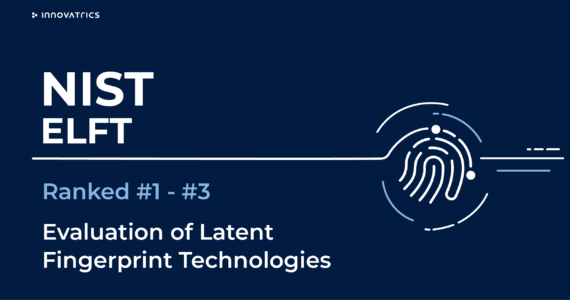
Latest NIST ELFT Results Confirm Innovatrics Top Position in Latent Fingerprint Identification
Innovatrics’ latest submission to the NIST ELFT benchmark confirms its latent fingerprint algorithm is the most accurate in ...
Read moreInnovatrics is the first to offer mobile palm recognition technology that requires only a mobile phone or an IP camera for verification and identification. In verification scenarios, palm prints can be more accurate than facial recognition, especially when both palms are used. In identification, they can replace faces as a modality for access control for those who don’t want to share their photos.
Innovatrics is adding palm modality for identity verification, allowing various use cases where the face is not easy to use. It enables smartphone cameras to retrieve palm prints. When using it to verify payment, for example, actively showing a palm can be more convenient and secure than facial recognition. If used in identification scenarios as well as for access control. A simple wave of a hand in front of a camera can be used to open doors with the same reliability as facial matching. Another potential use is a second factor in passwordless access systems.
Palm prints share significant characteristics with fingerprints: they are unique to each individual and they are usually collected via a dedicated scanner. Furthermore, they can serve as a second factor when using facial recognition as the main one. This makes palms a perfect replacement in situations where people cannot or do not want to share their face – especially in the case of the new Innovatrics algorithm, which works with standard smartphones and IP cameras. A good example would be head covers that obscure faces. With palm recognition, these don’t need to be removed to gain access.
“The use of standard smartphone or IP cameras underscores the system’s versatility and accessibility, allowing for quick deployment without the need for specialized equipment,” explains Daniel Ferak, Head of DOT Business Unit at Innovatrics.
The accuracy of the algorithm can be even higher than that of facial recognition (depending on the photo quality), especially if both palms are used for identity verification. At the highest security level at a False Match Ratio (FMR) of 0.00001% (one incorrect identification out of ten million), the algorithm has a FNMR of just 0.54%.
This extremely low FMR makes the system highly suitable for applications requiring the highest level of security. The approach has been tested with all kinds of cameras, from the very high-end to the low-end smartphones to ensure it works with all available devices.